Table of Contents
The ketogenic diet is a popular weight loss diet with some healthy benefits. Unlike other diets, it’s a low-carb diet but high in fat and moderate in protein. Its key goal is nutrition which is proven to accelerate fat burning. Ketosis occurs when the body is starved of simple carbohydrates and glucose. Slashing carbs, however, is not so easy at first.
If you’re thinking of starting or struggling with it, take a peek at our complete ketogenic food list. We list the best keto foods supported by research with their macro-nutrient details. It’s the list you wouldn’t want to miss!
The ketogenic diet and best keto foods
Keto is a healthy food-focused diet that includes meat, fish, non-starchy vegetables, natural fats, and a few fruits. However, the macronutrient makeup is key to maintaining the crucial state of ketosis.
Typically, it follows a macronutrient composition of 70% fat, 20% protein, and only 10% carbs (1). This means that for a person following a typical 2000-calorie diet, daily carb intake must be less than 50 grams of net carbs, which is the total carbs minus fiber (2).
When on a ketogenic diet, eating plenty of healthy fats is fine, but be wary of your carbohydrate intake. Here is our curated list of the best nutritious foods for a keto diet!
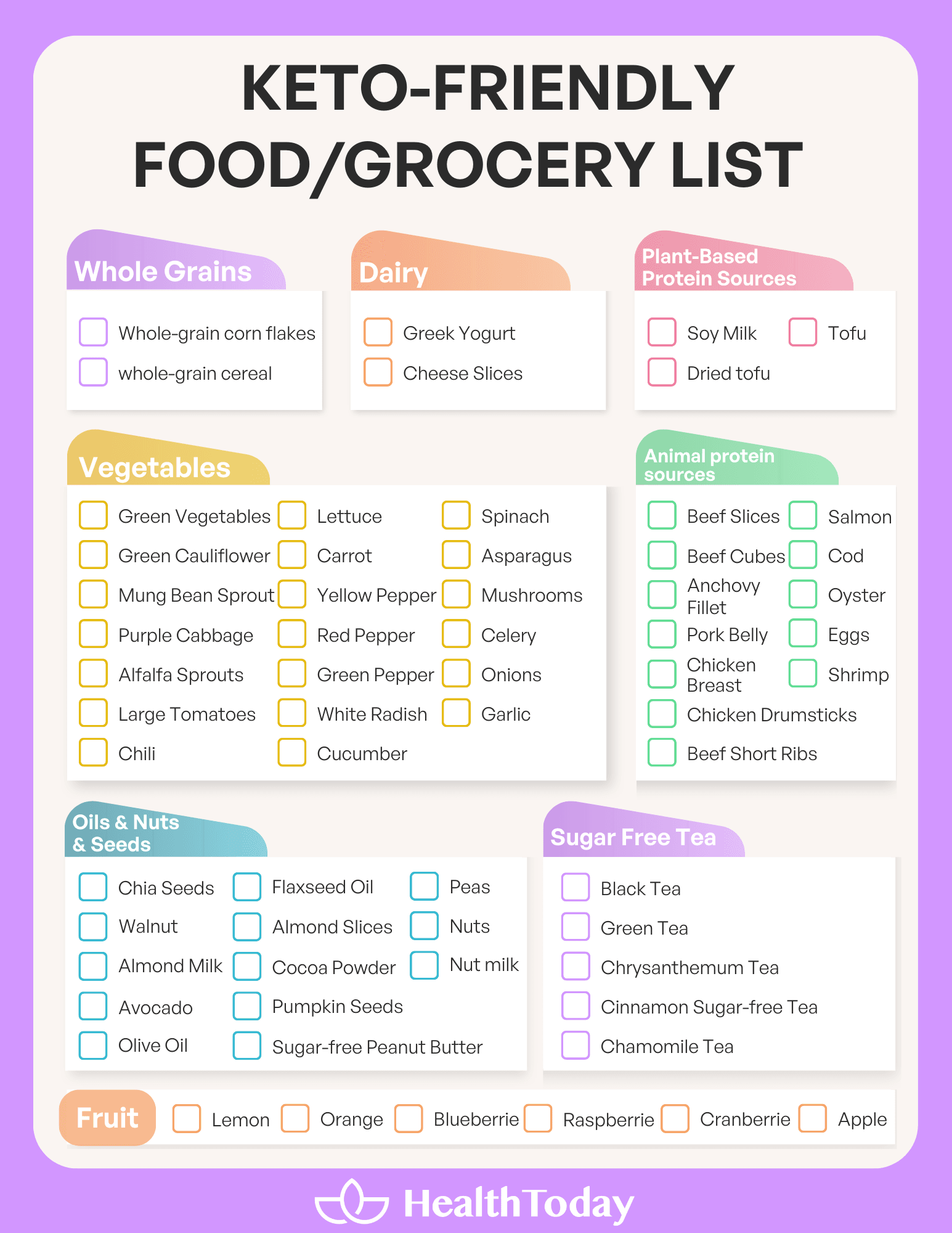
It’s also important to eat a wide variety of foods from the keto food list. This will support your overall health and ensure sufficient nutrient intake while reducing any health risks (3).
Foods you can eat on the keto diet
Healthy fats from protein-rich foods like meat, poultry, and seafood provide better satiety—meaning you feel full for longer (4). They also help improve blood sugar levels (5). Non-starchy veggies, a few fruits, and some oils and salad dressings can all be part of the keto diet.
Proteins for a ketogenic diet
Naturally devoid of carbs, high-fat proteins are perfect for the keto diet. Protein-rich foods from plant and animal sources alike can boost metabolism, improve satiety, and help with weight loss (6).
Seafood
Seafood is an excellent choice for nutrient-dense foods, and most are lean meats (7). However, when eating keto, fatty fish is key. They are also the best source of two essential polyunsaturated omega-3 fats called docosahexaenoic acid (DHA) and eicosapentaenoic acid (EPA) (8).
Some of the best zero-carb fatty fish are:
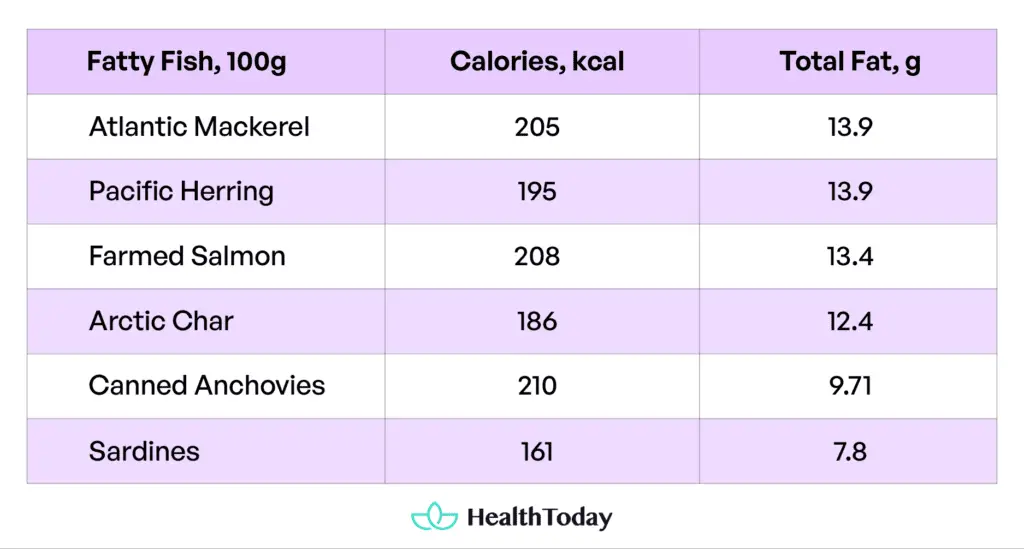
Studies have also shown that frequent fish intake can reduce the risk of cardiovascular disease and improve mental health (15, 16). The American Heart Association recommends at least two 3-ounce (85 g) portions of fatty fish per week (17).
Other kinds of seafood, such as shellfish, also have a substantial amount of omega-3 fat (18). However, they contain at least a gram of net carbs. Seafoods more suitable for the ketogenic diet are lobsters, salmon roe, and shrimp.
Seafoods are versatile. Baked, grilled, or fried, you can serve fatty fish in a salad or pair it with some pickled vegetables. You can steam, boil, blanch, or add them to a soup!
Meat and poultry
Meat and poultry are staples in any ketogenic diet being great sources of high-quality protein. At the same time, they are rich in B vitamins and other essential minerals, like the more difficult to obtain iron (19).
In a keto diet, fatty cuts of meat are a must. Compared to red meat, poultry like chicken and turkey are leaner proteins (20). However, choosing parts with the skin on or prepping them with butter or olive oil is a way to increase the fat content.
Some common fattier cuts of meat are (21):
- Beef – ground beef, ribeye, and short ribs
- Pork – belly, shoulder, and bacon
- Lamb-loin and rack
- Poultry – chicken liver, chicken skin, duck
There is some debate about the suitability of red meats for human health. There are risks of high blood pressure and obesity, but eating them in moderation can be healthy (22, 23).
It is essential to remember that keto is not only a low-carb and high-fat diet, but it’s also about moderate protein. Even though meats are high in fat, they are also high in protein. So, when on keto, be careful about overloading proteins.
Poultry eggs
Eggs are one of the healthiest foods for people trying to lose weight (24). Luckily for keto dieters, their nutrient profile is in line with the ketogenic diet. Eggs are not only packed with fats, proteins, and vitamins, but they’re also low-carb foods (25).
Notwithstanding, there are many keto-friendly eggs besides chicken eggs (21):
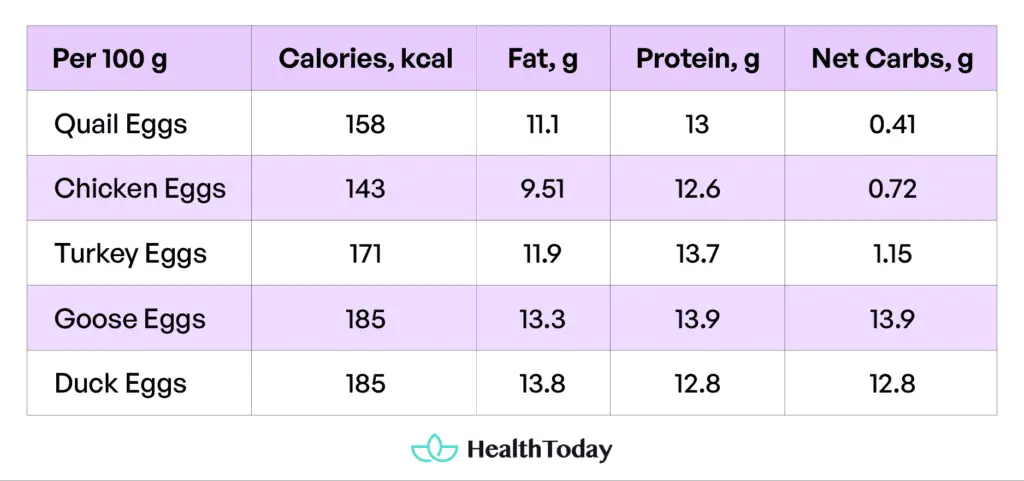
Although most of the fat is found in the yolk, eating the whole egg provides you with more vitamins (26). Because eggs are a good protein source, it is important to be careful of the fat-to-protein and carbohydrate ratio.
Dairy
There’s a caveat in having dairy while on a ketogenic diet.
Indeed, most dairy products are high in fat, calcium, and protein. This makes absolute sense to include them in a keto diet (27). However, dairy contains lactose, a form of sugar that converts into glucose during digestion (28).
Too much glucose will push you out of ketosis. That is why choosing dairy products that are low in sugars is key for an effective keto diet.
Cheese
Although the nutrients in cheese vary, all types of cheese are welcome in a keto diet. Generally, they are high in fat, moderate in protein, and low in carbs. However, some cheeses are more sustainable than others.
For example, hard cheeses, such as cheddar cheese, tend to be lower in lactose and carbs than soft cheeses, like cottage cheese (29). For comparison, we list the best and worst cheeses for keto below (21):
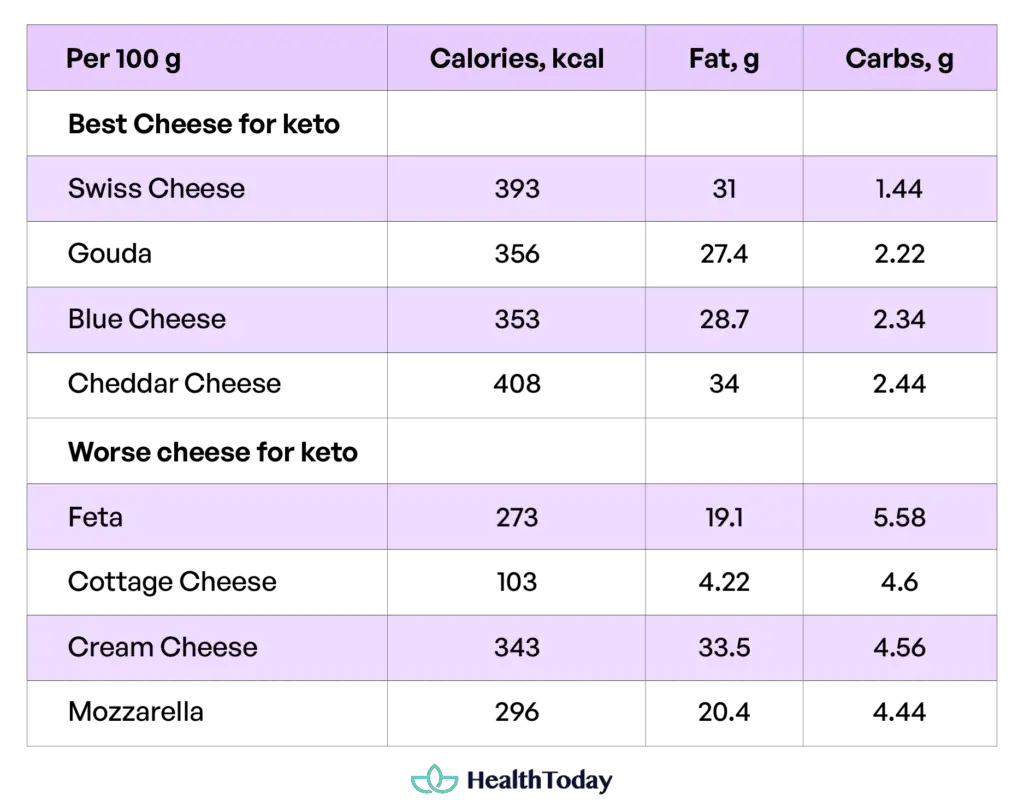
Overall, the best cheeses contain less than 4 grams of carbs and more than 25 grams of fat per 100 g of cheese. Cream cheese, mozzarella, and feta cheese have a higher carb content but are lower in fat. Lastly, cottage cheese is a healthy food, but it is not ideal for the keto diet.
Cream
Heavy cream is full of energizing fats. With less than 4 grams of net carbs per 100 grams, this high-fat dairy is the best for a low-carb keto diet (30). It is also healthy and loaded with essential nutrients like calcium and vitamin A.
Sour cream, on the other hand, contains 5.6 grams of carbs with just 18 grams of fat per 100 g serving (31). Although inferior to heavy cream, it’s still a great addition to keto meals like chicken enchiladas or a beef bake.
Butter
Being carb-free, butter is essential to any low-carbohydrate diet (32). It’s also about 80-90% fat, making it an unparalleled option for keto dieters. Butter also is one of the richest sources of butyrate, which is good for gut, brain, and metabolic function (33, 34)
Vegetables for a ketogenic diet
A diet rich in vegetables has numerous benefits, such as improved blood sugar control and lower risks of type 2 diabetes (35). There’s a plethora of vegetables. However, not all are low-carb. So how do you know which ones you can have on a ketogenic diet?
Generally, green leafy vegetables that grow above ground and non-starchy vegetables are low-carb veggies. Some known vegetables containing less than 4 grams of net carbs (21):
- Spinach
- Swiss Chard
- Iceberg Lettuce
- Arugula
- Celery
- Asparagus
- Zucchini
- Cucumber
- Cauliflower
- Bell Peppers
- Mushrooms*
- Tomatoes
- Radish
- Eggplant
Tangy pickles, perfect for relishes, are suitable keto snacks as long as they do not contain added sugars. For example, sweet or candied pickles contain added sugars that can interrupt ketosis, while dill or sour pickles don’t (36, 37, 38).
*These include chanterelle, oyster, portobello, and white mushrooms.
Keto fruits
Unfortunately, most fruits are high in simple carbohydrates such as sucrose and fructose. However, there are two fruits that fit right into the ketogenic diet. These are avocados and coconuts.
Avocado
Avocados are a well-known healthy food high in fat. They are great keto food to enjoy with scrambled eggs for breakfast or in a keto-friendly burrito.
An avocado has just 1.83 grams of net carbs per 100 g serving. Avocados are also rich in vitamins C, E, and K (39). As such, they have a number of health benefits, namely, weight control and support for the heart, brain, and gut health (40).
Coconut
Coconut is an important crop native to tropical countries in the Asia-Pacific (41). It is famous for its refreshing coconut water, but coconut meat can be used to make keto-friendly coconut macaroons.
Keto dieters are free to enjoy coconut water since it contains only 4.5 grams of net carbs per 100 g (42). In the tropics, people also eat coconut flesh or meat. For keto dieting, a 100-gram portion of coconut meat only has 6.2 grams of net carbs (43).
Ketogenic oils and dressings
Since the ketogenic diet has a high demand for fat, healthy high-fat oils have become essential. In particular, a high-fat diet should contain two kinds of healthy oils called monounsaturated fat and polyunsaturated fat (44).
These good monounsaturated fats contain healthy cholesterols that can help reduce the risk of cardiovascular disease (45). They can also reduce hunger and help you feel fuller for longer(46). Thus, healthy fats, in appropriate proportions, are key ingredients for weight loss.
Sources of healthy oils include:
- Extra virgin olive oil – is the healthiest, least processed variety of olive oil linked to a long list of benefits (47).
- Canola oil – contains a good amount of essential polyunsaturated fat, omega-3 (48).
- Avocado oil – has mainly mono-unsaturated fats linked to better heart health and anti-inflammation effects (49).
- Soybean oil- contains 10‒40% oleic acid, a mono-unsaturated fatty acid that’s good for the heart (50, 51).
- Dietary guidelines recommend limiting saturated fats to less than 10% of the total daily calorie intake (52).
Nuts and seeds
Nuts and seeds make the perfect keto diet foods. They are low in net carbs and high in healthy fats (53). Besides, nuts and seeds help with weight loss while protecting against chronic illnesses like diabetes and cardiovascular disease (54, 55).
With a few exceptions, common nuts have a high fat content that ranges from 46% in cashews to 76% in macadamia nuts (56). This makes them the second plant group with the most fats, just next to vegetable oils. Here are some popular nuts often found in a ketogenic diet:
- Almonds
- Brazil Nuts
- Cashew Nuts
- Hazelnuts
- Macadamia nuts
- Pecans
- Pine Nuts
- Walnuts
Like nuts, seeds are nutrient-rich but contain a higher portion of polyunsaturated fats (57). Oily seeds also have bioactive compounds that provide health benefits beyond their nutritional values (58).
Healthy seeds include:
- Pumpkin and sunflower seeds – roast or eat raw.
- Flax and chia seeds – add to protein drinks or turn into pudding.
- Sesame seeds – puree into hummus or sprinkle over meals.
Dark chocolate
Terrific news for chocolate lovers!
Chocolate can be a keto staple as long as it’s sugar-free dark chocolate with at least 70% cocoa. On average, 30 grams or a single serving of 70-85% dark chocolate contains about 10 grams of net carbs (59).
Cacao, a main component of chocolate, has many polyphenols and is a key source of flavonoids (60). Sugar-free dark chocolate is a net positive for overall heart health. It can lower blood pressure and prevent endothelial dysfunction (61, 62).
Since chocolate is palatable, it’s especially good for beginners of the ketogenic diet. Even better are nuts and seeds with an extra coating of dark chocolate. These are perfect as snacks and desserts!
Keto sweeteners
The preference for sweet taste is quite universal (63). But in a keto diet, nutritional ketosis requires limiting sugar consumption to the minimum. This makes it challenging for keto dieters to enjoy sweet things.
Fortunately, there are a few alternative sweeteners that are low in carbs and calories (64):
- Stevia – a plant sweetener that is non-nutritive, meaning little to no carbs (65).
- Erythritol – a natural sugar alcohol with only 5 grams of carbs per teaspoon (66, 67).
- Sucralose (Splenda) – a non-nutritive, calorie-free artificial sweetener (68).
- Xylitol a sugar alcohol with only 4 grams of carbs per teaspoon (69).
Using artificial flavorings and non-nutritive sweeteners, diet sodas are sugar-free and calorie-free (70). This means that drinking sugar-free soft drinks won’t kick you out of ketosis.
Drinks for a ketogenic diet
Plant-based milk, unsweetened tea, and black coffee are all keto-friendly drinks.
Though there are exemptions, like cereal-based milk, most plant-based milk are non-dairy alternatives perfect for cutting back on carbs (71). Broadly, one cup, or 240 mL, contains less than 4 grams of net carbs:
- Macadamia milk, a completely zero-carb option (72).
- Almond milk, widely used with only 1 gram of net carbs (73).
- Flax milk, rich in essential omega-3 fats with only 1 gram of net carbs (74).
- Unsweetened soy milk – a good source of protein with 3 grams of net carbs (75)
In addition to plant-based milk, unsweetened tea or black coffee are almost carb and calorie-free (76, 77). Both contain polyphenols and caffeine, which have positive effects on the body (78, 79).
On another note, pure forms of alcohol like whiskey, rum, and vodka are all zero-carbohydrate keto-friendly drinks (80). Moreover, red and white wines like Merlot and champagne contain less than 5 grams of carbs per glass (81, 82, 83). However, all alcohol should be used in moderation, as alcohol can have other adverse health effects.
Foods to restrict on the Keto Diet
Essentially, high-carb foods on a ketogenic diet are unfavorable to ketosis. Essential ketone bodies are used as an alternative fuel source instead of glucose (84).
Thus, for the ketogenic diet to be effective for weight loss, it is essential to restrict foods high in carbohydrates like grains, fruits, and sugary beverages.
Grains and starches
Grains and starches are the main sources of carbohydrates, so are not recommended for a keto diet. Since the goal is to restrict the total carbs to only 20‒50 grams a day, simply one serving can disrupt ketosis.
Generally, grains and starches include both natural and refined foods (85):
- Wheat products such as bread, pasta, and crackers
- Refined or whole grains like oats, rice, and barley
- Starchy vegetables like sweet potatoes, squash, and corn.
- Beans and legumes like lentils, kidney beans, and chickpeas.
To give a clearer picture, a serving of grains has about 80 grams of total digestible carbs, while legumes and beans contain about 20‒30 grams of net carbohydrates per 100-gram serving (86, 87, 88).
Most fruits
Most fruits are high in simple carbohydrates or natural sugars such as fructose, sucrose, and glucose (89). A medium-sized banana already contains 21 grams of net carbs, easily surpassing the lower limit of a keto diet (90).
Other examples of high-sugar fruits include apples, oranges, pineapples, grapes, prunes, mangoes, and pears (91). Even taken as a fruit juice, it still doesn’t make the cut as keto-friendly (92).
Processed foods and sweets
It isn’t surprising that most desserts and processed foods are off-limits for keto (93, 94). Many are high in carbohydrates, especially those with refined grains, additives, and starchy ingredients.
Not only are these off-limits to keto dieters, but they also harm overall health (95). They increase the risk of cardiovascular disease, depression, and mortality.
Foods to avoid (96):
- Breakfast cereals
- Tinned vegetables
- Packed biscuits
- Processed meats
- Microwavable
- Soda
Natural sweeteners
While there are some nonnutritive sweeteners that can be enjoyed in a keto diet, many others are high in carbs (97). These can increase blood sugar levels and also disrupt the state of nutritional ketosis.
Here are some sweeteners that are commonly recognized as healthy foods but aren’t keto-friendly (98, 102):
- Agave – 76 g carbs and 0.2 g fiber per 100 g
- Maple syrup – 67 g carbs per 100 g
- Honey – 80 g of sugar per 100 g
- Coconut sugar – 4 g sugar per tsp, but high in fructose
Cocktails and beer
Even if a cocktail alcohol-base is carb-free from 100% distilled alcohol, the other ingredients, like soda and syrups, are usually carb-heavy (95).
Here’s the carb count for the common types of cocktails (21):
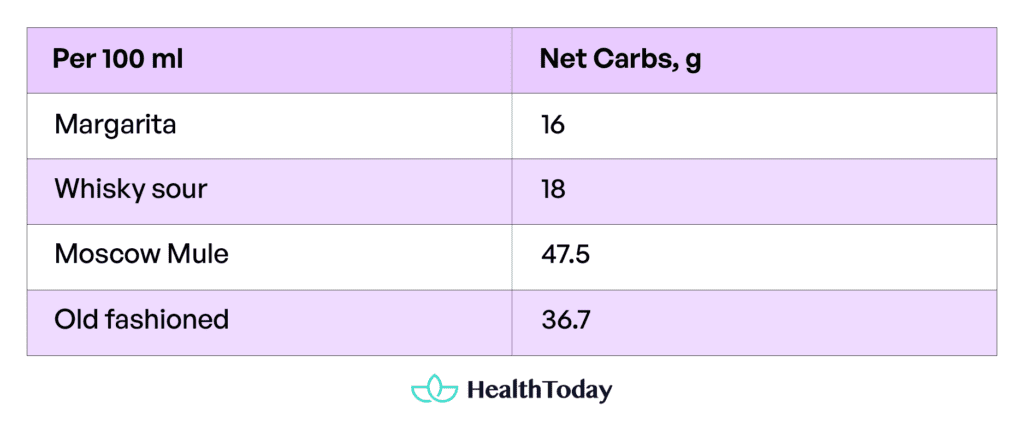
Carbohydrates play an important role in beer brewing (96). Basically, beer is fermented from carb-heavy whole grains like barley (97). Moreso, one can of beer has about 13 grams of net carbs, making it unsuitable for the keto diet (98).
Controversial keto foods and beverages
There are foods such as dairy that people find controversial for keto. Some may choose to avoid these foods. Others find they can maintain ketosis when eating them in moderation.
It’s essential to remember that the keto diet is not a one-size-fits-all approach. Ultimately, the decision to include these controversial keto diet foods depends on your goals, preferences, and health status.
Some fruits
Naturally made of sugars, most fruits are banned from the keto diet. There are, however, a few low-carb and high-fiber options, like berries and melons.
Berries
Berries are especially low in carbohydrates while high in fiber, polyphenols, and some essential micronutrients (98). They are especially high in anthocyanins, an antioxidant that helps with disease prevention (99).
- Raspberries – 5.40 grams of net carbs (100)
- Blackberries – 4.31 grams of net carbs (101)
- Strawberries – 5.68 grams of net carbs (102)
However, blueberries and cranberries on a low-carb diet can’t be enjoyed as freely. A 100 g portion of these berries contains 12 and 8 grams of digestible carbohydrates, respectively (103, 104).
Melons
Being sweet and refreshing, melons are easy to crave. Luckily, the three common melons, namely, watermelon, cantaloupe, and honeydew, have a relatively low sugar content compared to other fruits. A single serving while on a keto diet won’t do much damage (21):
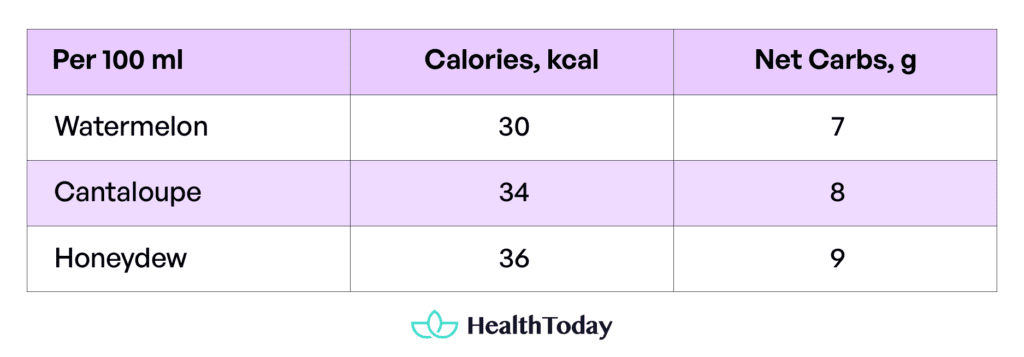
Keto flour
Cutting back on bread and pasta may be one of the biggest challenges on a keto diet.
Fortunately, almond flour contains only 7.1 grams of net carbs per 100 g serving (105). It’s a keto-friendly substitute for wheat or plain white flour.
Legumes and beans
Like fruits, most beans and legumes are high in carbohydrates, but there are a handful of exemptions, like soybeans and green beans.
Soybeans
Unlike other legumes, soybeans are lower in carbohydrates and much higher in fat (106). Plus they are also found in different colors (21):
- Green edamame soybeans have 7 g carbs per 100 g
- Black soybeans have 2 g carbs per 100 g
- Yellow soybeans have 20 g carbs per 100 g
Soybeans are processed into many products like tofu, soy sauce, and tempeh—all of which are controversial foods in a keto diet. With careful planning, soy and its byproducts can be eaten in a keto diet.
Green beans
Green beans are set apart from other bean products because of their low-carb content. Based on the USDA, raw green beans have a total carb count of 7 grams and 2.7 grams of total dietary fiber per 100 g (107). This means only 4.3 grams of net carbs.
Dairy foods
Regarded as healthy foods, dairy products, milk, and yogurt, are also hot topics of debate for keto dieters.
Milk
Milk is one of the most controversial keto beverages.
Many say that it isn’t keto-friendly because of significant amounts of lactose sugars (108). Some may argue, however, that a single serving doesn’t do much to disturb ketosis.
Nevertheless, here are the facts associated with dairy milk:
A 240 mL serving of whole milk contains 11.4 grams of total carbohydrates and 7.81 grams of fat (109). This means with a keto carb restriction of 20‒50 grams a day, one serving of milk would not easily knock you out of ketosis.
Yogurt
Yogurt is slightly low carb, but make sure to get unflavored versions like plain Greek yogurt or natural plain yogurt. Also, be sure to watch your portions!
On a side note, plain Greek yogurt contains fewer carbs and more protein than other yogurt, making it a preferable choice for a keto (111, 112).
Eating out on the Keto Diet
On a ketogenic diet, eating out is a natural challenge because of carb restrictions. But it does not have to be that difficult. Here are some tips for eating out on keto:
Plan ahead: If you are new to keto, research local restaurants that offer keto-friendly options.
Switch up ingredients: For sandwiches. Request lettuce wraps as a bread substitute.
Keep temptation away: When you’re offered pasta, desserts, or beer, give them a pass.
Rethink drink options: Know your limitations and stick to keto-friendly drinks like champagne, dry wines, or spirits. Water, unsweetened tea, and black coffee are perfect too.
Summary
Sticking to a very low-carb, moderate protein, and high-fat diet like keto can be challenging. However, people succeed at keto all around the world, so you can do it too! Strive to eliminate starchy foods and bulk up on healthy fats. Also, planning ahead and being creative with keto-friendly foods can make the diet more sustainable.






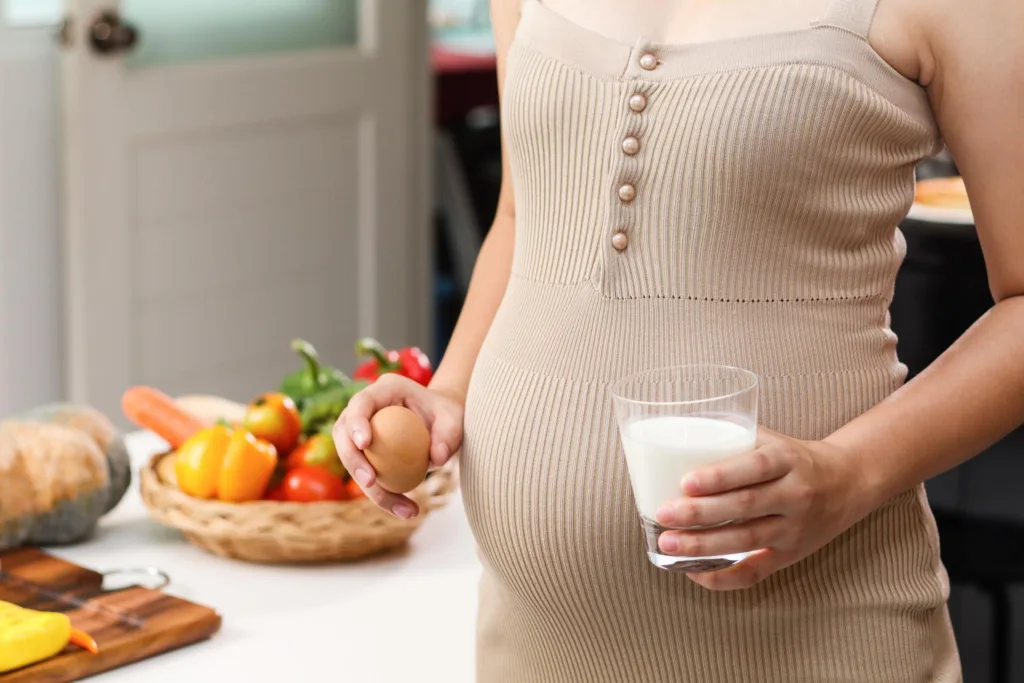

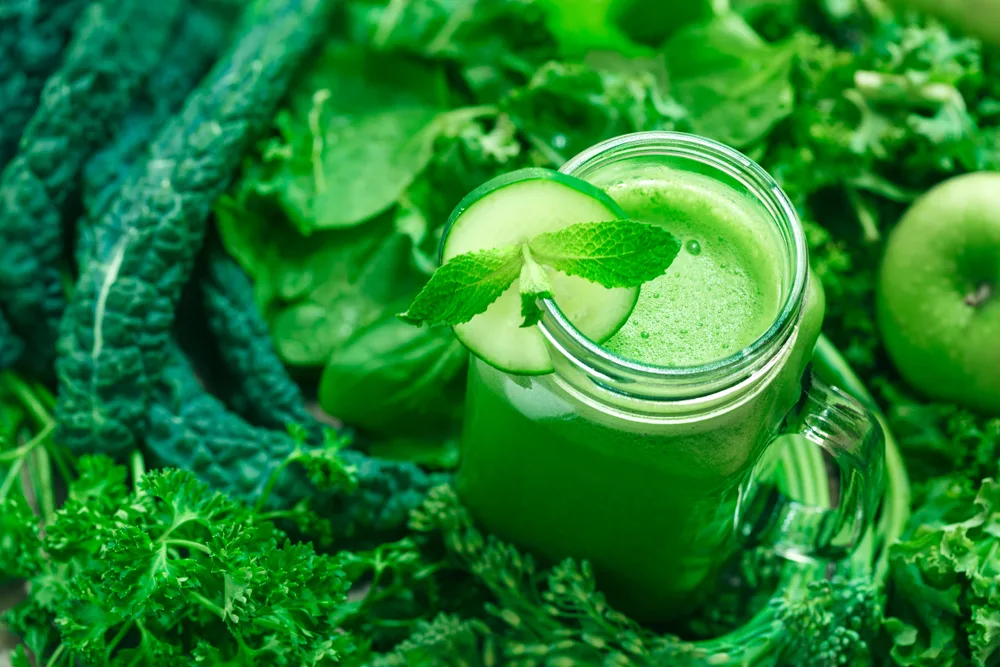




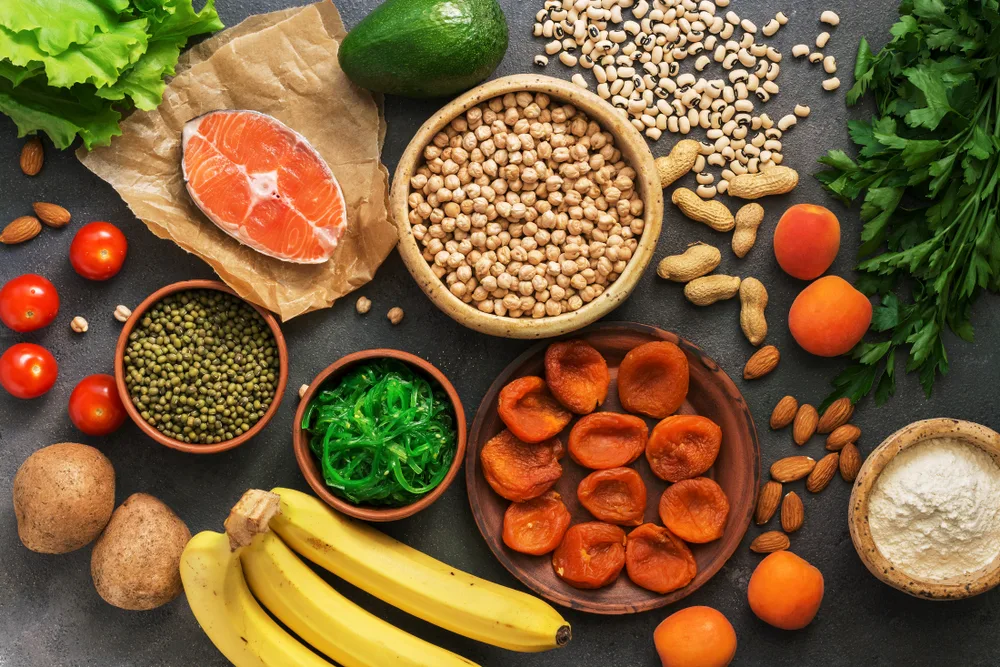



Comments
0